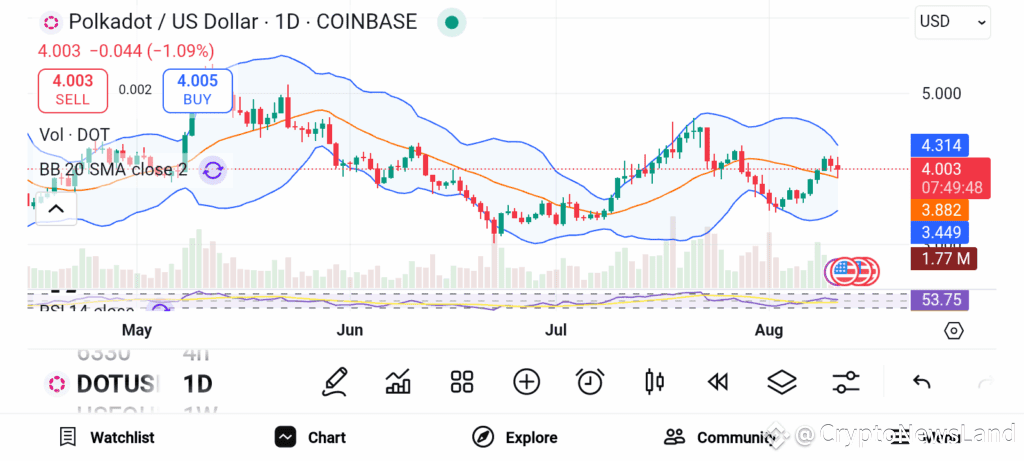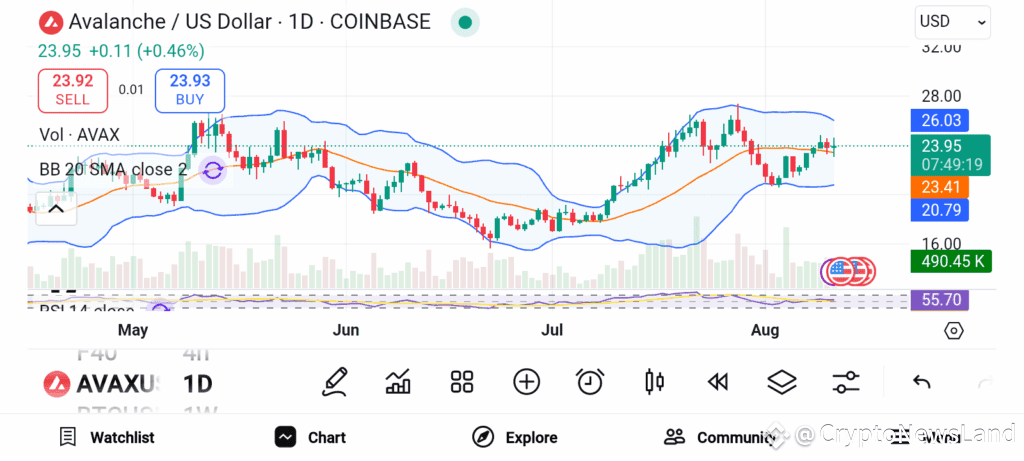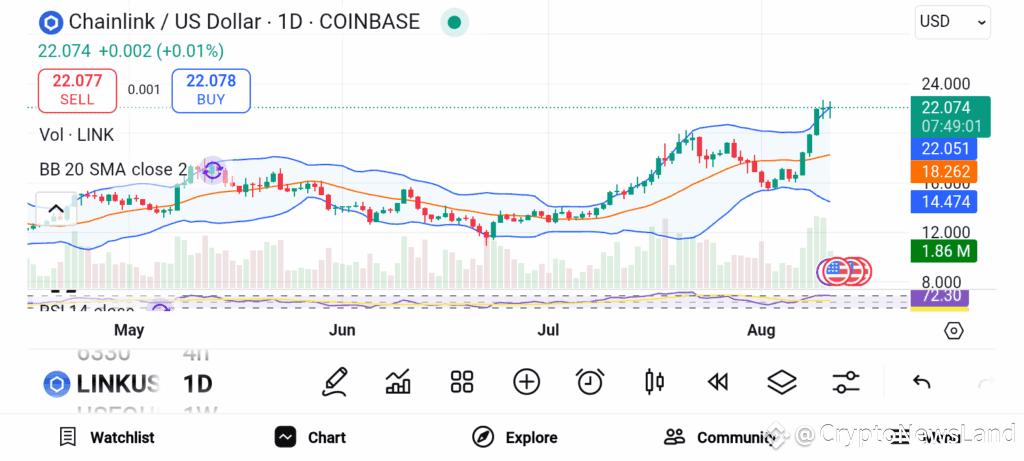
Polkadot connects multiple blockchains securely using parachains for speed and scalability.
Avalanche delivers eco-friendly, low-cost transactions with customizable Subnets and high throughput.
Chainlink supplies smart contracts with verified real-world data through decentralized oracles.
August 2025 sees enormous potential for cryptocurrency investors wanting to grow their portfolios. Some projects stand out for their unique technology, real-world use case, and obvious growth potential. These cryptocurrencies will do so much more than simply create price speculation; they offer solutions that will build on the future of blockchain. In this guide, we look at three standout picks. Each has strong fundamentals, active development, and a clear path toward wider adoption. Let’s break down why they deserve attention this month.
Polkadot (DOT)
 Source: Trading View
Source: Trading View
Polkadot is a decentralized protocol that facilitates secure communication among different blockchains. Through its cross-network functionality, Polkadot enables the transfer of data and value between different networks such as Bitcoin and Ethereum, without intermediaries. This cross-chain functionality is one component of the larger enhanced network ecosystem Polkadot aims to develop. Polkadot uses parachains - which are completely independent blockchain networks that will run simultaneously and parallel to one another. The system offers increased operational transaction speed, by allocating transaction load across independent parallel chains, Polkadot can process more transaction activity than Bitcoin or Ethereum.
Avalanche (AVAX)
 Source: Trading View
Source: Trading View
Avalanche is a Layer-1 blockchain designed for fast speeds, low costs, and eco-friendliness. It is capable of processing up to 4,500 transactions a second with low fees. This level of speed, quality, and affordability allows businesses and developers timely results in their projects, Avalanche exists to meet their needs. One of the most prominent features of Avalanche is its flexible Subnets. Users can create their own autonomous networks with flexible terms and guidelines. This capacity can meet various applications in different sectors, ranging from gaming platforms to a corporate enterprise type of solution. The structure of the Avalanche system employs a hybrid consensus structure that utilizes aspects of classic consensus and Nakamoto consensus to provide a transaction finality of less than two seconds.
Chainlink (LINK)
 Source: Trading View
Source: Trading View
Chainlink is a distributed network that connects real-world data sources to blockchain smart contracts. The connection allows smart contracts to use real-time data from APIs, external systems, and data feeds. A decentralized network has data sources that rely on services called oracles, which are responsible for retrieving data for smart contracts and verifying that data before sending it to the blockchain. The oracles verify their data before making it available to the blockchain, which allows smart contracts to act on accurate, reliable, and trusted data. LINK is the Chainlink token, where data providers are rewarded with LINK and pay for data services. The incentive model maintains a decentralized network and promotes reliability of the data sources.
Polkadot, Avalanche, and Chainlink each have unique strengths, bringing value to the crypto space in very different ways. Polkadot improves scalability, interoperability, and speeds up the collaboration of blockchains. Avalanche offers fast, green transactions, customizable networks, and puts emphasis on building. Chainlink brings trust in the real world into the blockchain environment through an oracle solution for smart contracts.



